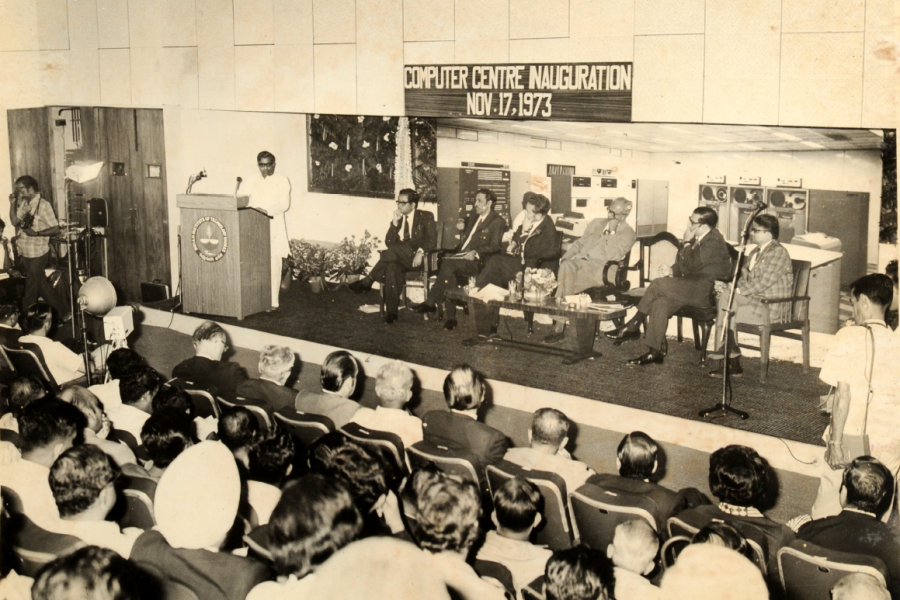
How crisis after Satyam scam was resolved with minimal disruption
An excerpt from ‘Against All Odds: The Story of India's IT Revolution’, in which the authors recount how NASSCOM and the government tackled the Satyam accounting scam

This excerpt has been provided to The Federal by Penguin Random House India, the publisher of Against All Odds: The IT Story of India. The book, in its entirety, chronicles the history of the Indian IT industry over the last six decades, tapping into the first-hand experiences of Kris Gopalakrishnan and fifty other stalwarts who built and shaped the IT industry.
In 1987, a serial entrepreneur, Ramalinga Raju, founded Satyam Computer Services, an export-oriented software services company in Secunderabad. Satyam partnered with Dun & Bradstreet Corporation for IT services and held a minority stake in the latter’s subsidiary in India, a company that later became Cognizant Technology Solutions. Satyam moved on from this investment, got on to the Y2K bandwagon at the end of the 1990s, and witnessed a period of rapid growth. By the beginning of the 2000s, Satyam was one of the top five Indian IT services companies, with a strong capability in the hot and emerging domain of ERP implementation.
One of the most dramatic events in the history of the Indian IT industry occurred in January 2009 when Raju sent a bombshell of a letter to Satyam’s board of directors with a copy to the stock exchanges and the Securities and Exchange Board of India (SEBI). The letter was a confession that Satyam’s cash and bank balances were inflated, and that it had an understated liability and an overstated debtor position. That was not all — the company’s revenue and profit margins were inflated for the September quarter of that financial year. It was a governance failure and corporate fraud of the gravest order. The line in the letter — ‘It was like riding a tiger, not knowing how to get off without getting eaten’ — has now passed into Indian IT folklore.

Ramalinga Raju’s bombshell and the shockwaves
This letter sent shockwaves across the government, IT industry and NASSCOM. In fact, Raju had been an active member of NASSCOM and had been its chairperson during 2006-07. Kiran Karnik, who was NASSCOM’s president in those years, puts the scandal in context: ‘This was a very shocking case because Satyam was very highly regarded and had received all the possible awards for governance… they were audited by not just some auditor but by one of the global top-four companies. The concerns were threefold. First, people would lose their jobs if the company just wound up; 50,000 jobs gone … The second concern was (that) a big company among the top five going under was not a very good signal. Third was what it did for (the reputation of) the Indian IT industry in terms of customers abroad suddenly getting concerned and asking the question, “What about other vendors in India, should we be looking elsewhere?” So, India as a favoured destination for IT might take a hit. At a broader level, India was seen as a great investment destination. Would this (incident) indicate poor governance standards in India and put off investors?’
Also read: Burden of centuries-old history weighs heavily on current Indian politics
The govt’s proactive support
The way the government assessed the context of the scandal with the IT industry and NASSCOM was proactive and supportive. Karnik remembers the decision-making process and says, ‘One strong view was — “It is terrible and sad, but this is part of the corporate world. Companies suddenly go under and shareholders will lose. We are very concerned about people who (might) lose their jobs. But frankly, what do we do?” There was a view at the other extreme — “This is terrible. It is a disaster for the country. A loss of 50,000 jobs, and (a situation) with political implications. Let us nationalize the company.”
‘Finally, after a lot of discussions, which some of us were involved in, the government took a sensible approach. It did not take over the company, but the government superseded the existing board and put its own nominees there; initially the three of us — Deepak Parikh, C. Achuthan and I — and three others were added later.’

The primary focus of the government-appointed board was on Satyam’s clients and employees. The board assured the clients that they would ensure uninterrupted service and even do a smooth transition to a different vendor if the client needed that. This assuaged the immediate concerns of the clients who had chosen Satyam because of its competence. The board boosted the morale of the employees by reiterating that the entire company was not at fault and that this scam was committed only by a few individuals; and that the board was doing all it could to ensure that the business remained ticking.
The role of NASSCOM
NASSCOM played a crucial role in resolving the crisis. Som Mittal, who was its president then, recalls the happenings in the first few days that followed Raju’s letter: ‘We called for a meeting of past chairpersons of NASSCOM and the executive council… there was a need for us to show our best face. First, it was to tell the stock market that we (Indian IT service companies) would re-verify our cash and give a statement that we have audited the cash (to assuage investors and clients that their financials were healthy)… Collectively, we all agreed to issue a statement that we would not wilfully poach either customers or employees (from Satyam). That statement was extremely important to build confidence… And we made many calls as NASSCOM to Satyam’s customers stating just the facts and saying, “This is what the government is doing, we would have a board coming in … this was a fraud committed by a few people, the law would take its course and we will support you.” And when I look back on my long career, I would look at those seventy-two hours as probably the most defining ones because NASSCOM could step in, get the support of everyone and make a difference at that point in time.’

Also read: IT companies likely to slash campus hiring by 20% in next financial year: Report
The resolution of the Satyam scandal is still used as a case study of how India quickly solved this issue with minimal disruption. Karnik sums it up: ‘Keep in mind that these frauds, though rare, have happened around the world. I have ten examples, including from Europe and the US . . . Satyam is the only company which came back on its feet.’ Tech Mahindra subsequently bought a majority stake in Satyam.
Kris Gopalakrishnan succinctly describes the challenges that beset the Indian IT industry in the 2000s: ‘It was not just sunshine throughout. We also witnessed some dark moments and a few events of concern in the Indian IT industry. Eventually we rallied and came out stronger … The Satyam scandal could have had an adverse impact on the Indian IT industry. It was creditable for the industry, NASSCOM and the government to work in sync to resolve the crisis in quick time.’
(Courtesy of Penguin Random House India)
S “Kris” Gopalakrishnan is an Indian billionaire businessman who is recognized as a global business and technology thought leader for his role in growing the IT services industry worldwide.
N Dayasindhu is the co-founder and CEO of itihaasa Research and Digital, a firm focusing on the evolution of technology domains and business history.
Krishnan Narayanan is co-founder and President of itihaasa Research and Digital.

